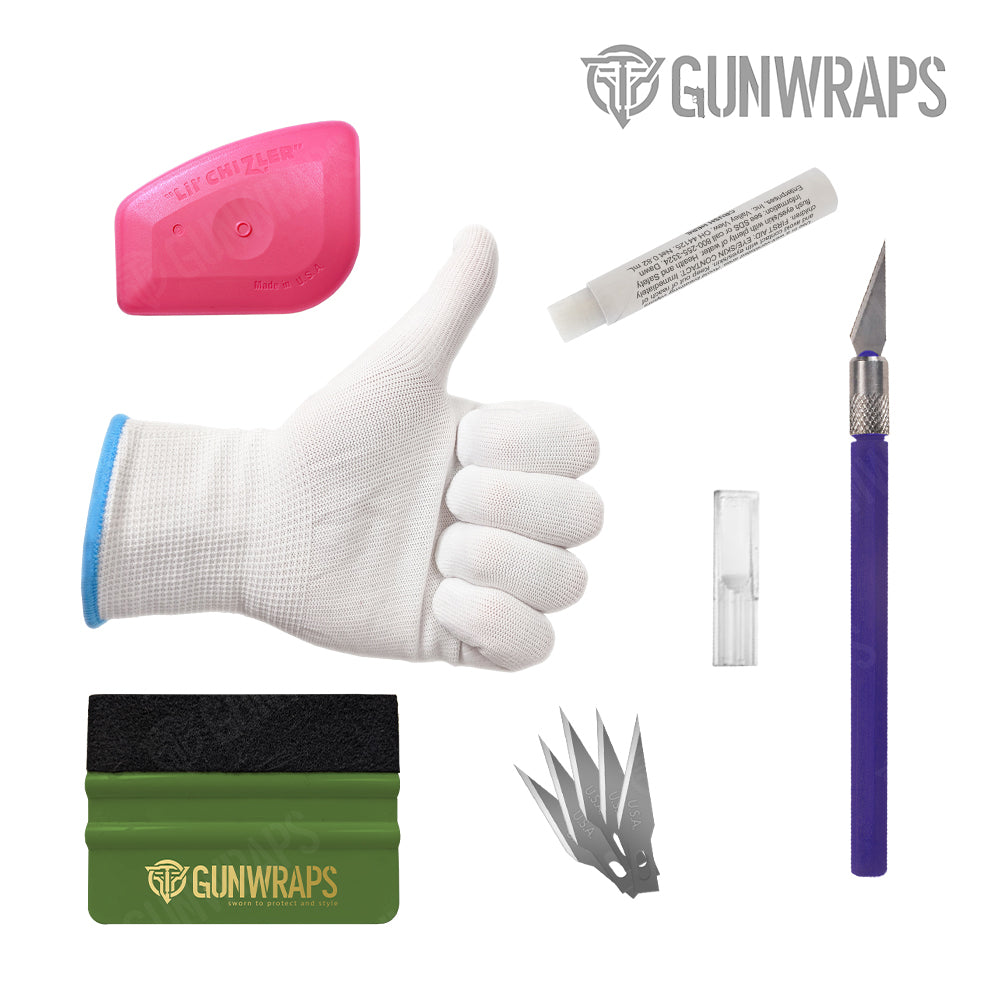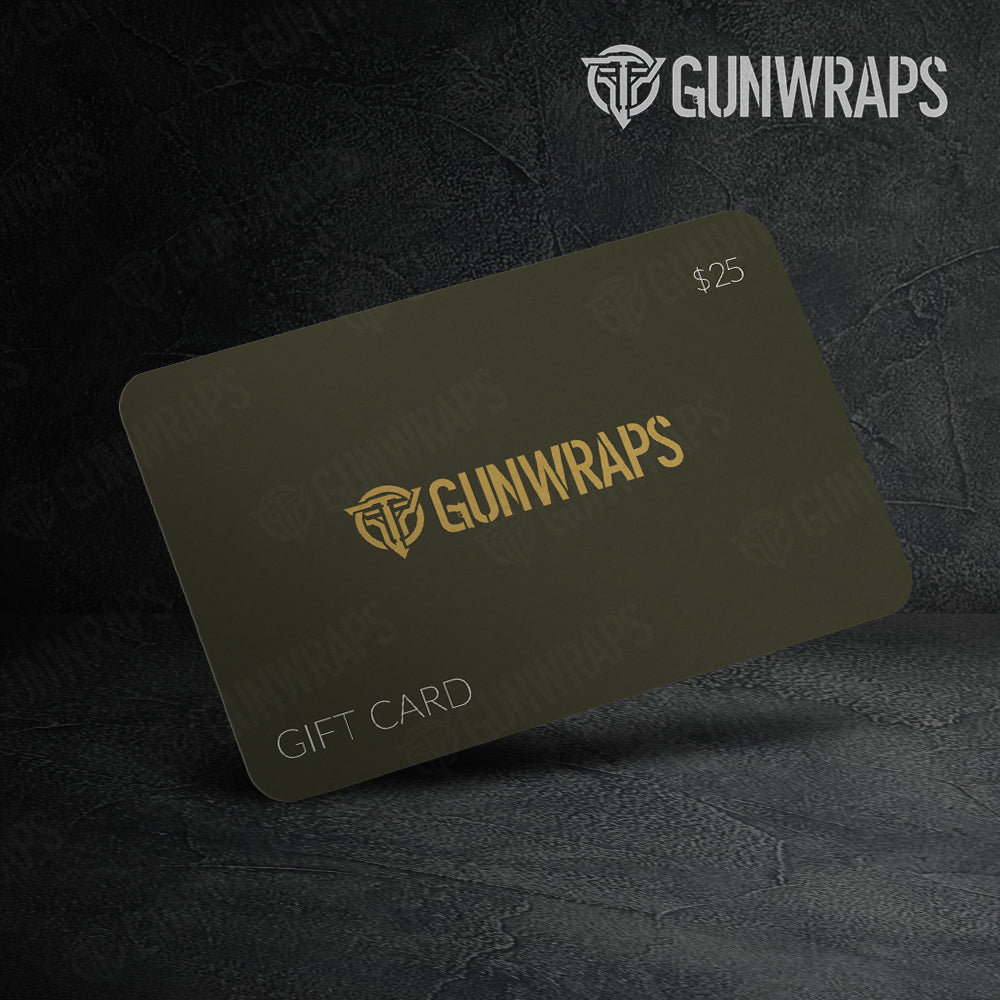A timeless activity combining knowledge of the natural world, patience, and talent is hunting. Whether you hunt often or start, a good hunt depends on your ability to follow deer. GunWraps provides a large selection of gun skins to assist you in remaining hidden in the wild since we at GunWraps appreciate the need for preparation and concealment. This essential hunting guide will give you vital advice to effectively track deer, guaranteeing that your hunting trip is both profitable and quick.
Recognizing Deer Tracks
Recognizing deer's tracks is one of the basic skills to follow them. Regarding their mobility habits, behavior, and health, deer trails can reveal much. Here are some salient features to give thought to:
- Print Size and Shape: Oval deer tracks usually feature two separate front points, the size of which is determined by the deer's age and species.
- Stride Length: The distance separating consecutive tracks will show the deer's haste and speed. While longer strides can show the deer is going swiftly, short steps signify caution.
- Track Rhythms: Look for indicators of dragging hooves or direction adjustments that might indicate the deer is avoiding something or reacting to disturbance.
Familiarizing yourself with these features can help you improve your deer tracking.

Following Deer through Snow
Snow offers a great canvas for following deer because their footprints are more apparent, and the cold may retain smell trails. Following these deer tracking guidelines particular to snowy weather will help:
- Look for Clearly Defined Paths: Follow tracks to water supplies, bedding spaces, or feeding sites.
- Identify Environmental Disturbances: Fresh snow can highlight disturbances such as broken branches or paw prints indicating recent deer activity.
- Use Fragrance Control: Scent travels farther in snowy circumstances. To go undetectable, wear scent-control clothes and apply scent-masking sprays.
Tracking deer in snow requires patience and meticulous attention to detail, which increases the chances of a successful hunt. Enhance your camouflage strategy with our Best Camo Wraps for Hunting in Snowy Conditions.
Hunting in Peak Deer Activity
Knowing when deer are most active will help you to plan strategically. Usually, deer are most active in the late evening and early morning. These are perfect periods for effectively tracking deer since:
- Lower Light Conditions: Your concealment is more easily maintained in less visibility.
- Increased Movement: Deer are more prone to travel between eating and sleeping locations during these times.
- Reduced Human Activity: Fewer hunters and outdoor enthusiasts mean less possibility of upsetting your tracking attempts.
To enhance your chances, schedule your hunting visits around these times of highest activity.

Monitoring Deer Following a Shot
A decent and moral hunt depends on tracking deer following a shot. These guidelines will help you:
- Remain Calm and Quiet: After shooting, remain still and listen for any movement or sounds suggesting the deer's direction.
- Search for Blood Trails: Blood can lead you to the deer's location. Track the blood and be wary of your surroundings.
- Use a Tracking Dog: Look for the injured deer more quickly if you can access a trained hunting dog.
Good tracking following a shot guarantees respectful and effective retrieval of your quarry.
Stay Focused
A hunt requires constant attention. Distractions could cause missing indications or tracks, lowering your chances of following deer effectively. These pointers help you to keep concentrated:
- Set Clear Objectives: Clearly state your objectives for your hunt—whether you wish to track for a defined duration or identify a certain location.
- Limit Distractions: Try to keep noise and movement to a minimum; stay mindful of your surroundings.
- Take Regular Breaks: Regular pauses help you keep physical stamina and mental clarity.
Maintaining concentration helps you better see and comprehend indicators, improving your tracking efficiency. Ensure your hunting practices are ethical by reading our post on Hunting Ethics: Respecting Wildlife and Conservation Practices.
Mark the Way
One helpful approach is to make sure you can retrace your steps and avoid losing sight of the animal. The following describes how to mark the road successfully:
- Use Natural Markers: Reference points can be stones, broken branches, or certain plants.
- Create Physical Markers: Mark your track subtly using tie-strakes of fabric or biodegradable tape.
- Take Notes: Note important sites and observations in a notebook or using a GPS gadget.
Marking your course helps you negotiate the terrain without losing sight of the deer or your hunting path.

Get Low with Camouflage Clothing
Effective deer tracking depends on your blending into your surroundings. Wearing camouflage helps you remain hidden and lessens your chance of frightening the deer. Take into account the following:
- Choose Appropriate Patterns: Choose camouflage designs that complement local plants and the season.
- Minimize Shadows: Wear clothes that reduce shadows and stay away from highly contrasting colors.
- Layer Appropriately: Dressing in layers lets you keep concealment while allowing you to change with the seasons.
Good concealment raises your chances of seeing deer behavior free from human awareness.
Monitoring with Technology
Modern technologies can help track deer. These resources can help you improve your tracking efforts:
- GPS Devices: GPS devices let you record tracking paths, designate sites, and negotiate terrain.
- Trail Cameras: Set up trail cameras to track deer movement and pinpoint hotspots.
- Hunter-Specific Apps: Use tools for hunters that provide tracking logs, map overlays, and weather updates on your smartphone.
Including technology in your tracking system will help you to simplify your hunting process and offer helpful information.
Making Use of GunWraps
Our specialty at GunWraps is offering premium gun wraps that improve camouflage capacity. Our goods are meant to fit your surroundings so perfectly that your gun stays hidden during your hunt. Our camo wraps provide the safety and discretion you need, whether you're tracking deer in open fields or deep forests. Furthermore, our wraps are simple to install, making them perfect for DIY aficionados trying to personalize their tools and wrap business owners.

Use GunWraps on Your Hunting Session!
Tracking deer requires knowledge, patience, and the correct tools. Understanding deer trails, using peak activity periods, staying concentrated, and using technology will help you improve your capacity to track deer successfully. Having premium gun skins from GunWraps also guarantees that you stay hidden and ready for any hunting environment. Accept this deer tracking advice and start your hunting journey with knowledge and assurance.
FAQ
Q: What are the most crucial tips for first-time deer hunters?
A: First, learn to spot deer tracks, decipher their movement patterns, and spot indications, including droppings and sleeping sites. Stay patient and use concealment wisely.
Q: How can I effectively track deer across several seasons?
A: Customize your tracking methods for each season. Look for footprints and blood tracks on snow. In warmer months, concentrate on scent management and spotting eating trends.
Q: With what technologies might deer be tracked?
A: Specifically made for hunters, GPS devices, trail cameras, and smartphone apps can offer helpful information and improve your tracking accuracy.
Q: Why is deer tracking crucially dependent on disguise?
A: Camouflage lets you fit in with your surroundings, lowering the likelihood of spooking the deer and enabling better viewing of their motions.
Q: How might GunWraps improve my hunting trip?
A: Excellent gun wraps provided by GunWraps enhance your weapon's camouflage, reducing your visibility and raising your chances of a successful hunt.




























